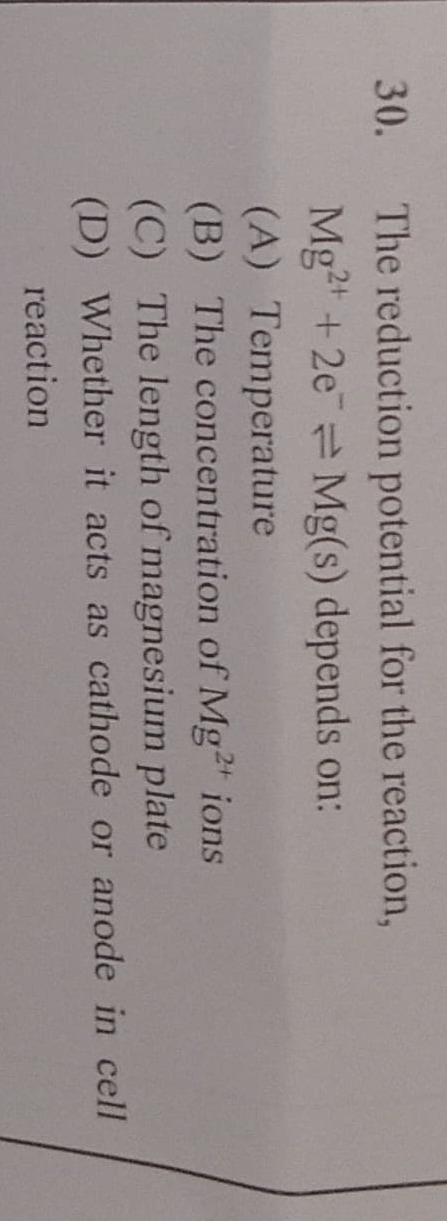Question
Question: The reduction potential for the reaction, $Mg^{2+} + 2e^{-} \rightleftharpoons Mg(s)$ depends on:...
The reduction potential for the reaction, Mg2++2e−⇌Mg(s) depends on:

A
Temperature
B
The concentration of Mg2+ ions
C
The length of magnesium plate
D
Whether it acts as cathode or anode in cell reaction
Answer
A, B
Explanation
Solution
The reduction potential for Mg2++2e−⇌Mg(s) is described by the Nernst equation: E=E∘+2FRTln[Mg2+]. This equation explicitly shows dependence on Temperature (T) and the concentration of Mg2+ ions ([Mg2+]). Electrode potential is an intensive property, so it does not depend on the physical dimensions (like length) of the electrode. The role of an electrode (cathode or anode) in a cell is determined by its potential, not a factor that influences the potential itself.
